Defining Modernism at ArtMiami 2013
Anthony Japour looks at the work of Henry Moore & Lynn Chadwick
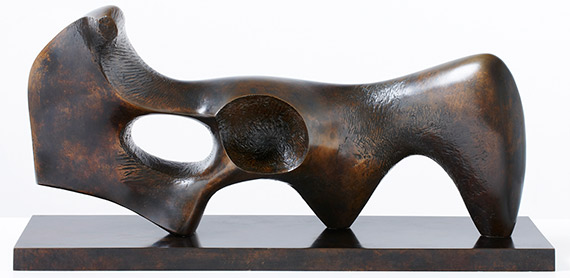

Anthony Japour (AJ) is an art collector, advisor, independent curator, and private art dealer. Japour deals in the international contemporary art movement with a focus on the Chinese Contemporary Art Movement and its relationship to the pillars of Western Contemporary Art. Since 2003, AJ has produced numerous art exhibitions and installations in Miami and South Florida through AJ Japour Gallery and now works on various art projects. AJ has served on the Fine Arts Board and the Cultural Arts Council of the City of Miami Beach.
Among art-world insiders who see a Christopher Wool work auction for over $20 million and a Zeng Fanzhi work for over $23 million something is not right; important works by the Modern Masters seem “undervalued” by comparison. And so it is, here at ArtMiami 2013 where visitors are greeted at the entrance of both fairs by Henry Moore and Lynn Chadwick, who, along with Jean Dubuffet and other artists of their time, define the Modernist movement of the 20th Century.
Henry Moore (British, 1898-1986)
Henry Moore was a British sculptor and draughtsman best known for his semi-abstract and figurative bronze sculptures.

After completing military service in World War I, Henry Moore studied at Leeds School of Art and the Royal College of Art in London and later taught at the Royal College of Art in London and the Chelsea School of Art. As an official war artist, Moore focused on charcoal drawings of people huddled inside bomb shelters during the London Blitz. In 1946, Moore was honored with his first major retrospective in the U.S. at the Museum of Modern Art, New York and two years later won the International Prize for Sculpture at the Venice Biennale of 1948.
Moore’s visual language draws heavily on the human body, singly in reclining women and in groups of recurring motifs of mother-and-child and family groups. Hollow shapes figure prominently in the works. Moore used a variety of materials-bronze, stone, and wood- but always completed the work in a refined manner.
One of the bronzes on view at ArtMiami 2013 was Spindle Piece, 1968 and was based on a visit Moore made to the Vatican forty years earlier the realization of the work. Moore was apparently taken by Michelangelo’s depiction of God Creating Man, where the fingers touch. The Spindle series is the sculptural result of his mulling this theme over the years. “Sculpturally, it’s just two pints about to meet. This work is on the same theme, only the two fingers are going out, not in”, said Henry Moore.
In the United States, Henry Moore’s most known work is a monumental sculpture outside at the entrance of the East Wing of the National Gallery in Washington, D.C. The work, known as Knife Edge Mirror Two Piece was installed in 1978. Moore was ultimately selected over Jean Dubuffet for the outdoor art installation work at the East Wing of the National Gallery; Dubuffet’s Welcome Parade (1974-2008) originally conceived for the East Wing of the National Gallery of Art was eventually realized in 2008 in New York City.

Lynn Chadwick (British, 1914-2003)
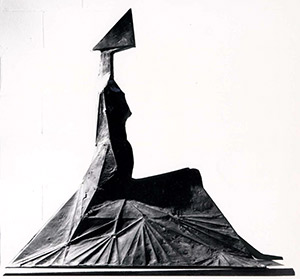
Lynn Chadwick, originally trained as a draughtsman in architecture and with skills as a welder was said to be regarded as the successor of Henry Moore.
Chadwick worked in the British Military in the Fleet Air Arm (1941-1944) and after the war joined a private architecture firm. While I have not catalogued all of the artists of the 20th century who served in a military, it seems to me military service may be a good pathway to becoming an important artist.
While Chadwick began his work experimenting with mobiles inspired likely by Alexander Calder, he ultimately became recognized for his figurative bronze sculptural works. It was not until Chadwick was almost 40 years old, that he first came to prominence when in 1953 he was a finalist in the Unknown Political Prisoner International Sculpture Competition.
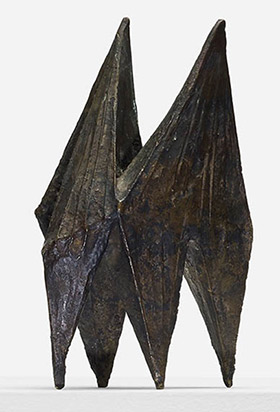
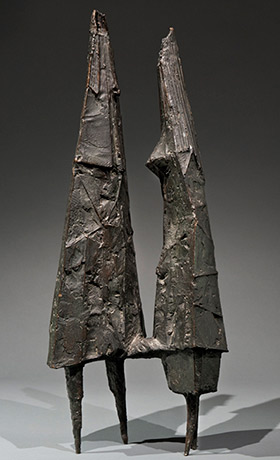
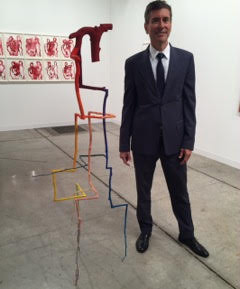
Anthony Japour is an art collector and art advisor. Japour lectures on the Chinese Contemporary Art Movement and its relationship to the pillars of Western Contemporary Art. For over a decade [2002-2012], Japour mounted numerous art exhibitions and installations in Miami Beach and South Florida through AJ Japour Gallery and linked these exhibitions to charity events at his home in South Beach devoted to the health, education and welfare of children. Japour has served on the Fine Arts Board and the Cultural Arts Council of the City of Miami Beach. Japour has been a contributor writing on contemporary art for SocialMiami.com since 2010.


